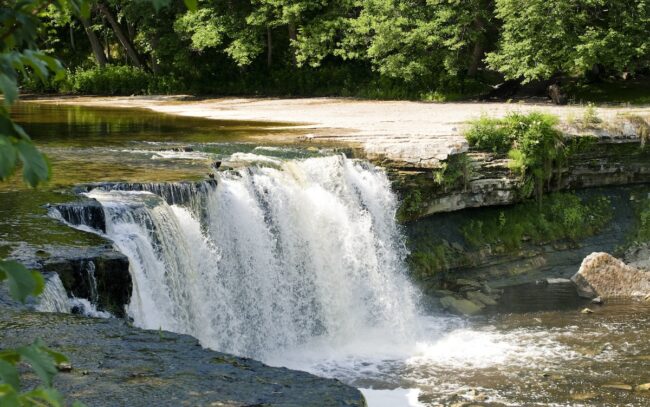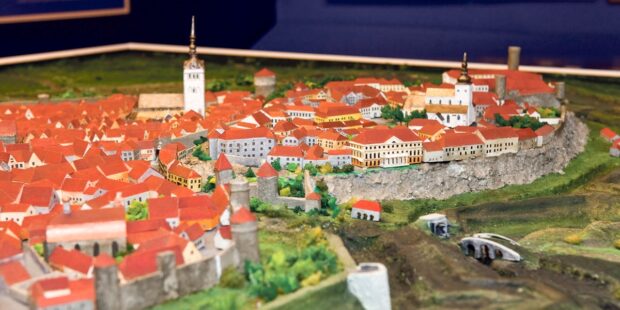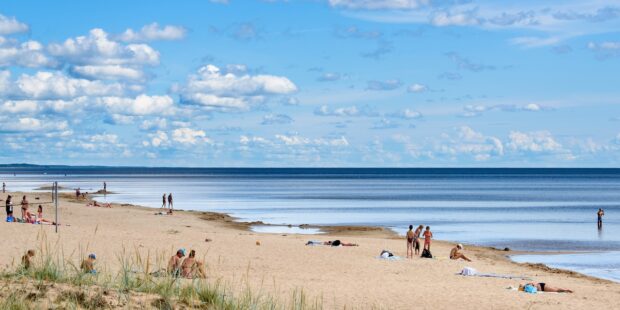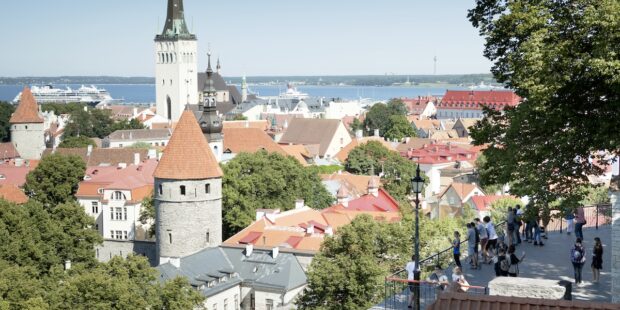6 Amazing Day Trips from Tallinn
Text Ingel Kink Photos Andrei Chertkov, Mikko Virta, Ingel Kink
Tallinn, the capital city of Estonia, is a charming destination known for its medieval old town, vibrant culture, and fascinating history. While exploring the city itself can be a delightful experience, there are also several breathtaking places to visit just outside of Tallinn. If your visit to Estonia’s capital is more than two or three days or you have been to Tallinn before, we recommend taking at least one of the following daytrips. Whether you’re a nature enthusiast or a history buff, these destinations offer a fantastic opportunity to explore the beauty of Estonia beyond the city limits. Here are six must-visit places outside of Tallinn:
1. Lahemaa National Park
This is the perfect destination to experience the true beauty of Estonian wildlife and nature. Established in 1971, Lahemaa National Park was the first national park in the Soviet Union, and is still not only the largest park in Estonia, but one of the largest in Europe. Covering more than 700 square kilometers, Lahemaa is a haven for wildlife, making it a popular spot for hiking, birdwatching and photography. One of the highlights of Lahemaa National Park is its extensive network of hiking trails. Whether you’re an avid hiker or just looking for a peaceful walk in the nature, the park offers hiking and study trails of varying lengths. As you explore the area, you will be surrounded by diverse landscapes such as lush native forests, serene wetlands that stretch further than the horizon, and both sandy and rocky coastlines.
There are also several historic manor houses in Lahemaa National Park that you can visit. Palmse manor with its romantic atmosphere is one of the best preserved manor complexes’ in Estonia. With history dating back 500 years, the Sagadi manor complex thrives as a center for tourism and education offering visitors a chance to explore its museum, nature school, and enjoy the comforts of its hotel and restaurant. Vihula Manor is a beautifully preserved estate in Estonia, dating back to the 16th century. Today, the manor offers guests a luxurious stay in its various historic buildings, alongside modern amenities like an eco-SPA for relaxation.
How to get there?
Guided Daytrip: The best way to explore Lahemaa National Park is through guided day trips from Tallinn. These tours offer a comprehensive experience, covering the park’s highlights with the added benefit of expert knowledge from local guides. You’ll delve into Estonian folklore and discover hidden spots you might otherwise miss. Tours typically include transportation, so you can relax and enjoy the scenic journey. To find the best match, a quick online search will reveal a variety of options, allowing you to compare and select the ideal tour for you. Remember, the best way to ensure a day trip that aligns with your expectations is to research and book in advance!
Car: If you prefer the flexibility of self-guided exploration, driving to Lahemaa National Park is a great option. From Tallinn, take the E20 and then Route 85, which will lead you directly to the park. The drive takes about an hour, depending on your specific destination within the park. Travelling by car allows you to create your own itinerary and explore at your own pace.
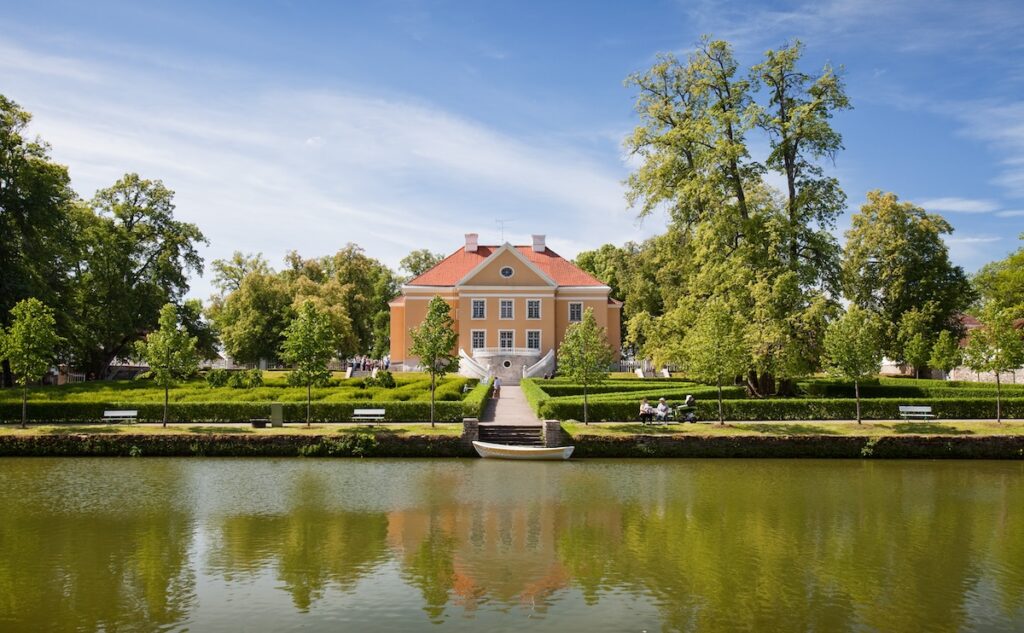
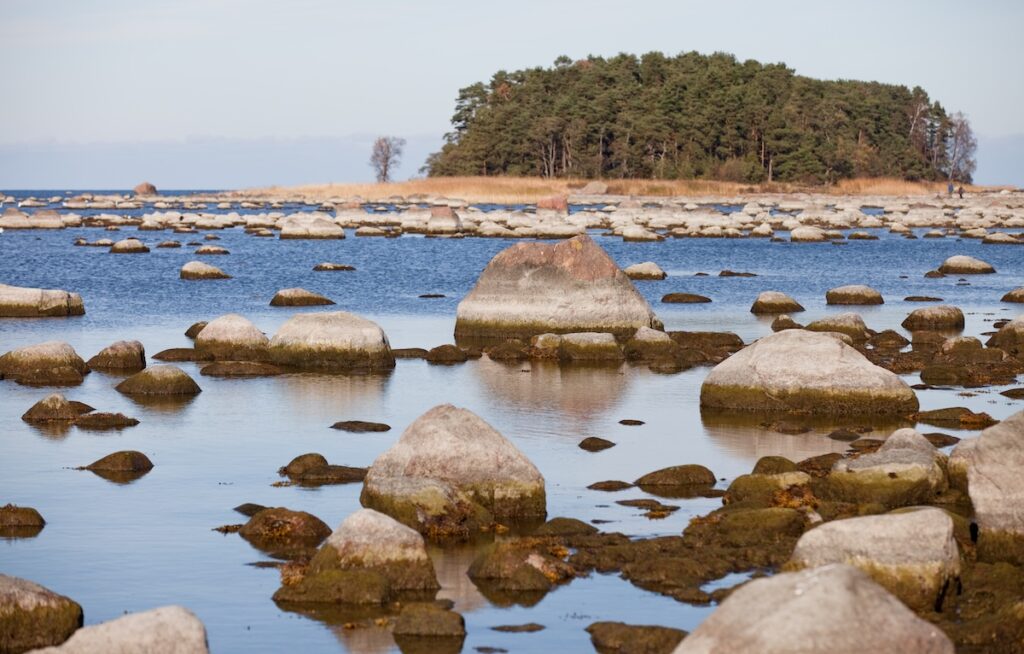
2. Aegna
Aegna, the 17th largest island in Estonia, emerged from the sea about 5000 years ago. During Middle Ages, horses were reared there, and traces of Bronze Age and Viking settlements have been found on the island. Just 14 kilometers from Tallinn, Aegna is a natural paradise, with 70% of the island covered in forest and a total coastline of 10 kilometers. So, you can easily get around the island in less than a day. The northern part of the island has a beautiful sandy beach, perfect for swimming and picnicking. It is also home to a mysterious stone labyrinth believed to have been built by the coastal Swedes between the 12th and 15th centuries. The island has many glacial boulders, the largest of which is an impressive 14 meters in circumference and 4 meters high. For the more adventurous, there are hiking trails, including a 6.5-kilometer-long trail. Camping is allowed in designated areas, such as the Lemmiku Suurepaadi beach, where barbecue areas provide the perfect outdoor grilling experience. For those who prefer a roof over their heads, there is accommodation available, but you will need to book beforehand.
How to get there?
Regular ferry service to Aegna runs from May to October
- The ferry VEGTIND sails from the Linnahall harbour to the island in just 20 minutes. Buy tickets here.
- For a more leisurely and scenic approach, consider taking a day cruise. When you book your cruise tickets, you have the option to add an Aegna excursion (minimum 10 people) and catering services to enhance your experience. It’s advisable to book your tickets early as prices are more favorable and you can change the date of your online-purchased ticket for free up to 96 hours before the trip.

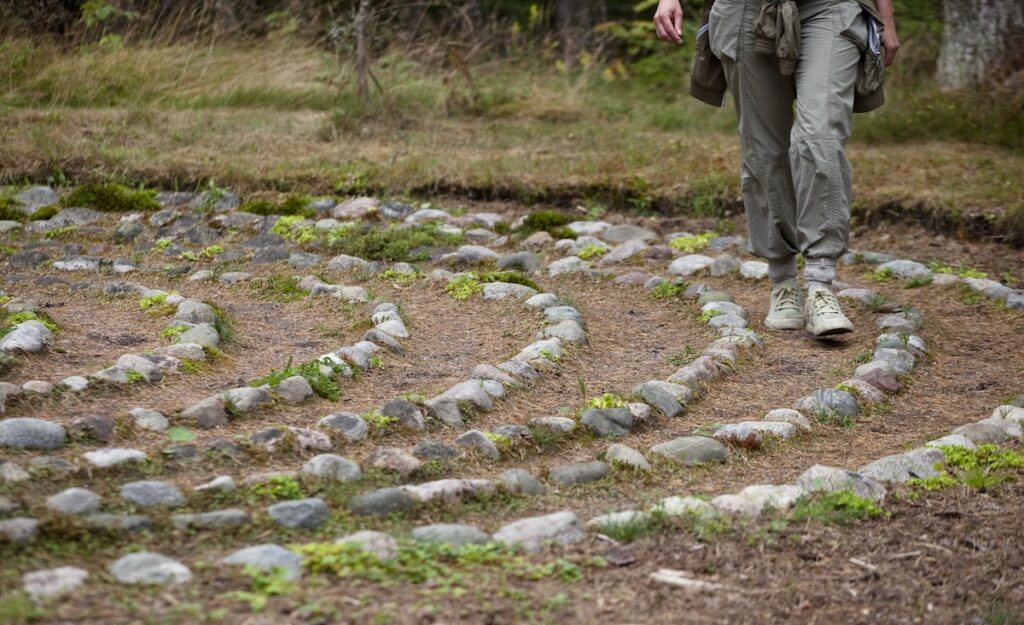
3. Naissaar
Naissaar is the fifth largest island in Estonia. Located just ten kilometers from Tallinn, the island will charm you with its pristine coniferous forests where you can pick blueberries in summer, its sandy beaches, where you can enjoy sunbathing and swimming, and hiking trails that offer you the chance to actively explore the island. Naissaar is also home to military fortifications that date back to the time of Tsar Nicholas II, providing a glimpse into its strategic importance over the centuries. The island has a total of 40 kilometers of narrow-gauge railway, the building of which began in 1913. Today, 2.4 kilometers of this have been restored and can be explored by a fun ride on a two-wagon train. Deer, wild boar, foxes, hares and squirrels can be found in the island’s dense forests. A total of 97 breeding bird species have been recorded on the island. A lighthouse is located at the northern tip of the island, where visitors can safely climb to the top and enjoy the beautiful view. Naissaar is also home to a number of boulders brought there by the ice age. Most of them are located on the coast of the eastern part of the island. The best known and largest are the Lehtmetsa rock in the Danish King’s Garden and the Männiku village boulder. In the southern part of the island is the Chapel of St. Mary, completed in 1938. A cementery, the exact date of use is unknown, is located within walking distance from the chapel, by the sea.
Today, Naissaar not only preserves historical treasures, but also celebrates culture with events like the Nargen Festival. Whether you like to learn about history, discover nature, or experience cultural events, Naissaar is the perfect place for all that.
How to get there?
Regular ferry service to Naissaar runs from May to October
- Monica ferry service: Find ticket information and prices here. There you can either buy a one-way ticket or book a day cruise.
- Ships Nargö and Kalk: Find ticket information and prices here.


4. Keila-Joa
Keila-Joa park is located 40 minutes drive from Tallinn. The park can be explored along a three-kilometre nature trail. Nature plays an important role in the beautiful English-style landscape of the park. The park’s landscape is varied, with hills adorned with conifers and deciduous trees interspersed with picturesque gulleys, and green meadows. Around 200 streams can be found in the park. However, the highlight of the park is its stunning 70-metre-wide horseshoe-shaped waterfall, which is the third largest in Estonia, behind the Narva and Jägala waterfalls.
How to get there?
Bus: Catch nr 108 bus. This takes you directly to Keila-Joa. The journey is about 1 hour long.
Car: If you prefer to drive the distance is about 32 kilometers from Tallinn and takes about 40 minutes. This gives you flexibility to explore at your own pace.
Taxi: A taxi ride from Tallinn to Keila-Joa is also convenient way to get there, but is the most costly option (between 25-50 euros one way depending on the service provider) It’s a good option if you’re looking for comfort and speed.
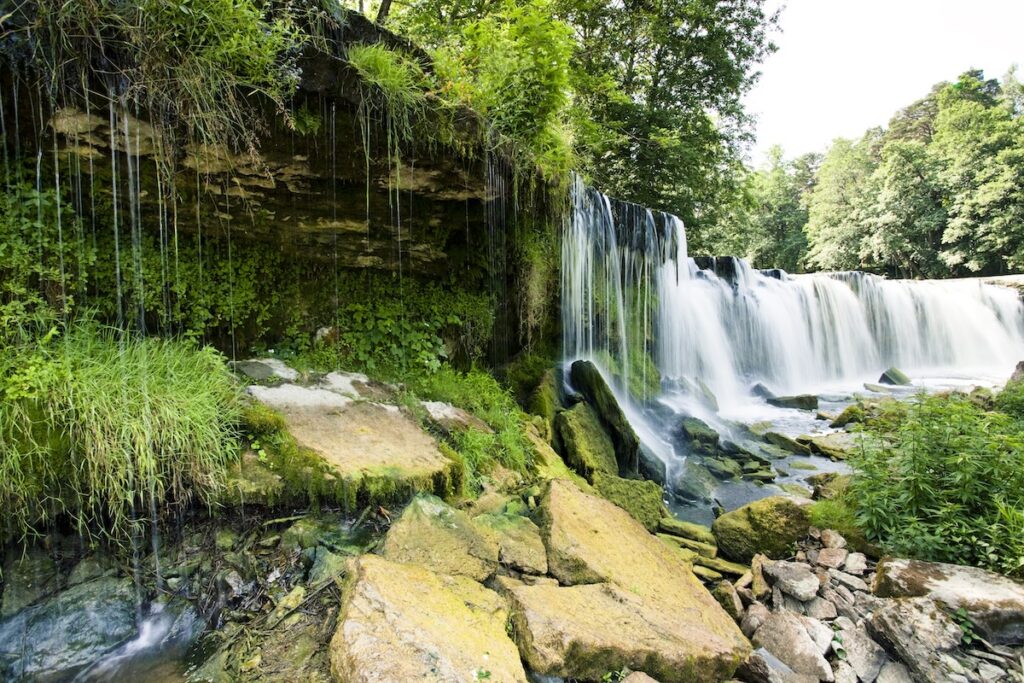
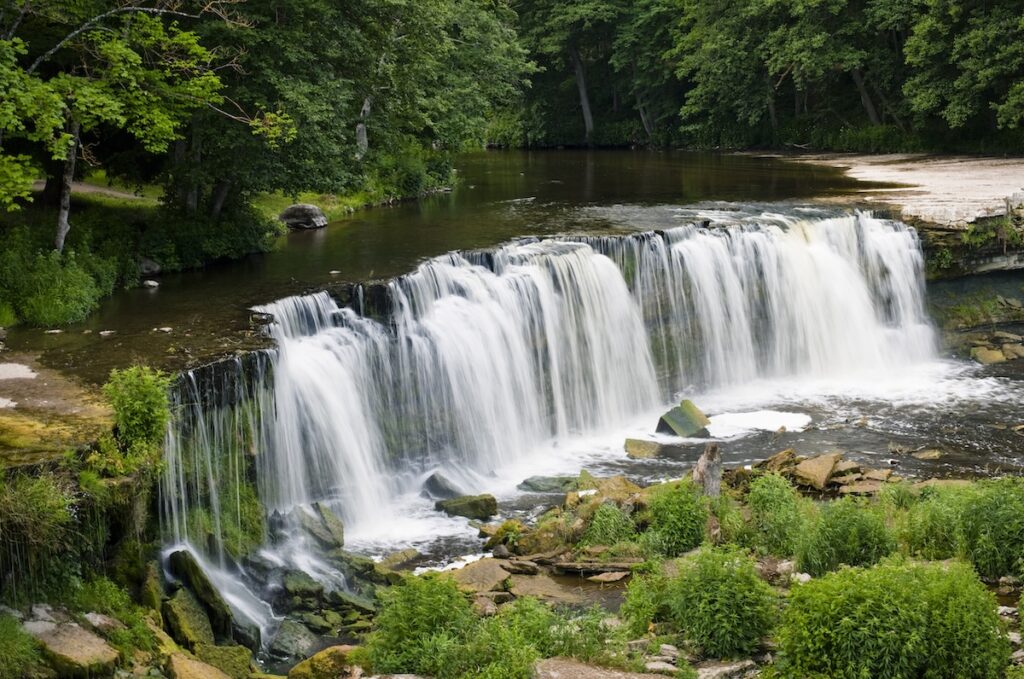
5. Paldiski
Paldiski, a town with a rich history and scenic port, is situated on the Pakri Peninsula in northwestern Estonia. Once known as Rågervik during its Swedish settlement days, it later became an important Russian naval base in the 18th century. Today, Paldiski serves as the administrative center of Lääne-Harju Parish and offers a blend of historical intrigue and natural beauty.
As a tourist in Paldiski, you’re invited to explore the town’s historical buildings, such as the grand Paldiski Railway Station’s main building. Art enthusiasts will appreciate the Amandus Adamson Studio Museum, dedicated to the renowned Estonian sculptor Amandus Heinrich Adamson. The Paldiski Nikolai Church and the bastions of the Peter the Great sea fortress, also known as Muula Hills, offer a glimpse into the architectural and military history of the region. For a panoramic view of the Baltic Sea, visit the Pakri Lighthouse, an iconic landmark of the area.
Paldiski is not only about historical sites; it’s also a place of natural splendour. The rugged coastline and the nearby islands of Suur-Pakri and Väike-Pakri provide a perfect backdrop for a day of exploration or relaxation.
How to get there?
- Train: The easiest and most convenient way to get to Paldiski from Tallinn is by train from the Balti Jaam railway station. The trip is 1 hour long, and trains leave hourly.
- Bus: Another way is to catch the nr 145 bus that takes you there in about 1 hour and 20 minutes.
- Car: If you prefer driving, head west towards Paldiski. Take Route 8 (E265) which is the most direct route to Paldiski. Continue on this road as it will lead you straight to the town. The drive should take around 45 minutes to an hour depending on traffic conditions.
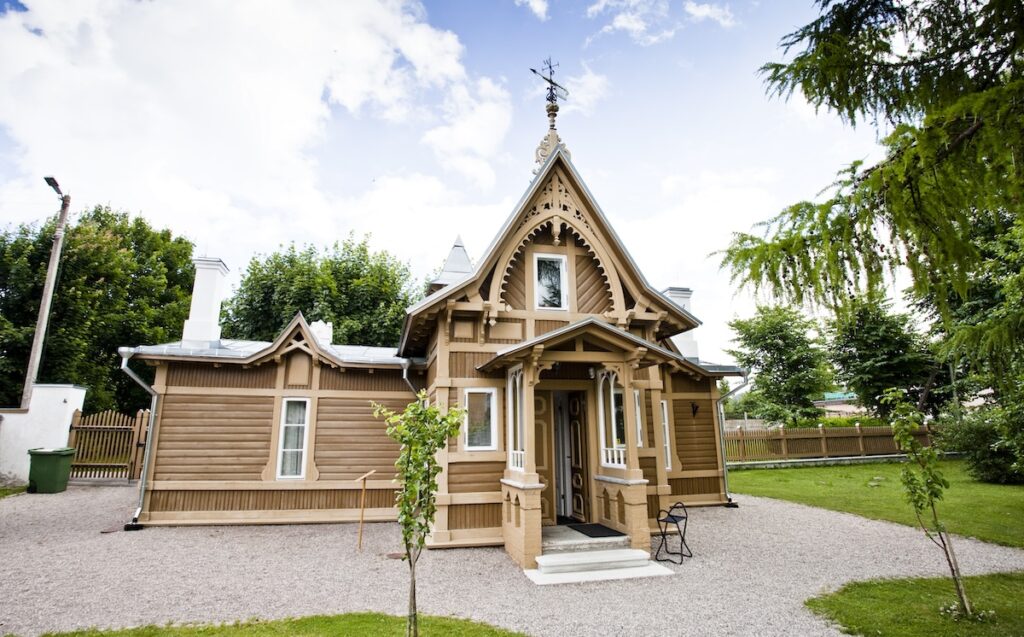
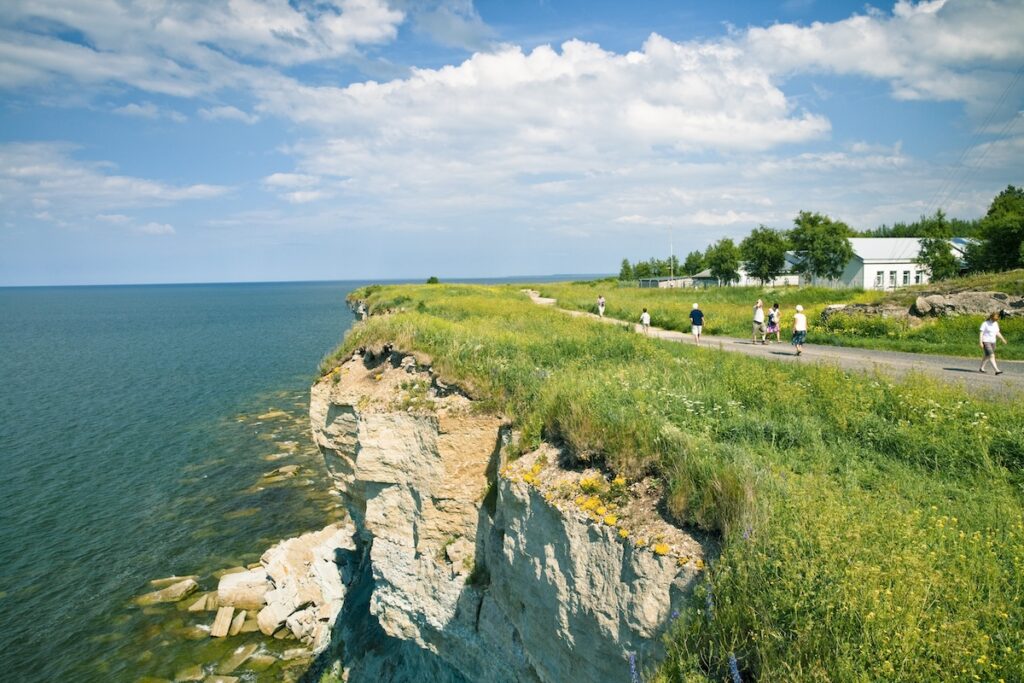
6. Rummu quarry
Rummu quarry is one of the most unique and interesting destinations for a daytrip. Once a limestone quarry operated by prisoners from the adjacent Murru Prison, it has now transformed into a stunningly clear blue lagoon with submerged structures, creating an uncommon and interesting scene.
Visitors can enjoy a variety of activities, including hiking around the artificial hill created from mining waste, sunbathing on the beach, swimming, and exploring the area with pedal boats and SUP boards. For those interested in history, guided tours of the former Murru Prison with an audio-guide provide an in-depth look at the prison’s past. The quarry also hosts a water park, a summer cafe, and a disc golf park, making it a perfect spot for a day of fun and relaxation. Read more about visiting Rummu here.
How to get there?
- Bus: You can catch bus nr 146 from Balti Jaam, Viru or Vabaduse Väljak stops. The journey takes about 1 hour and 15 minutes. Find the bus schedule here.
- Car: The second option is to drive by heading southwest on Paldiski manatee/Route 8 towards Haabersti. Continue to follow Paldiski maantee as it becomes E265. Stay on E265 until you reach the Keila junction. At the Keila junction, take a right turn onto Keila-Haapsalu maantee/Route 17. Follow Route 17 for a short distance, then take a left turn onto Rummu tee. Continue on Rummu tee until you reach your destination, Rummu Quarry.
- Taxi: The quickest and most convenient way if you don’t want to bother with public transport or driving yourself. (Price: 30+ euros one way depending on the service provider)
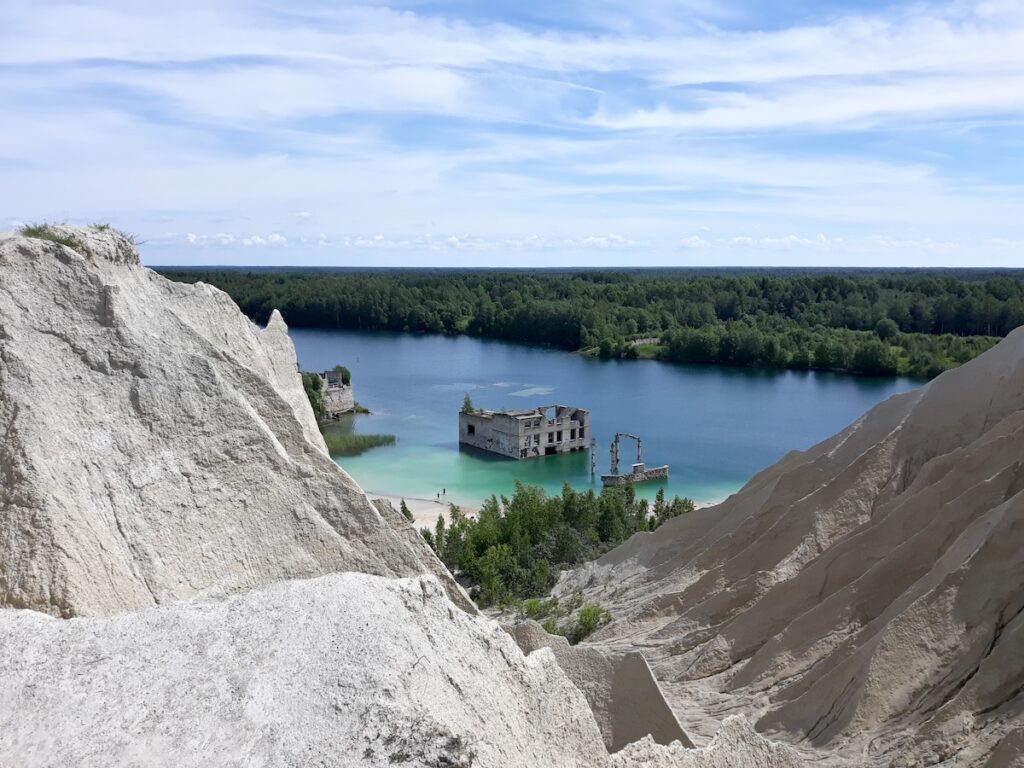

Additionally, you can take a daytrip to Northern Estonia coastal areas, visiting Keila Waterfall, Paldiski, and Rummu Quarry all in one day. With a variety of daytour providers to choose from, the best approach is to conduct a quick online search to find the tour that best meets your expectations.
As you can see, Tallinn’s surroundings are brimming with opportunities for adventure and discovery. Each day trip offers a unique slice of Estonia. So pack your bag, lace up your shoes, and set out to explore the treasures that lie just a short journey from the capital. These six amazing day trips from Tallinn are sure to leave you with lasting memories and stories to share. Happy travels!
To learn more about this and similar topicsAegna Keila-Joa Lahemaa National Park Naissaar Paldiski Rummu quarry

